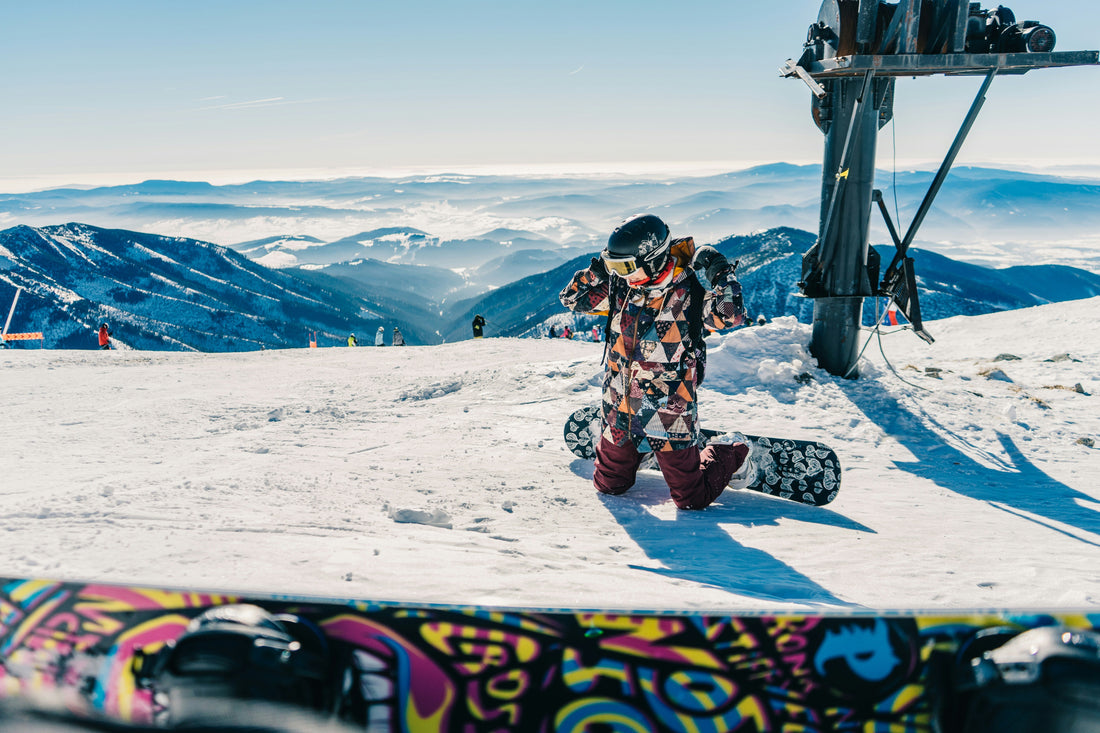
How to Choose a Snowboard: A Guide for Every Rider
Choosing the right snowboard is essential for an unforgettable snow experience. With so many options available, it can be difficult to decide which one is best for your needs. In this guide, we'll explore the key factors to consider when choosing a snowboard, to help you make an informed choice that suits your riding style.
1. Types of Snowboards
Each board is designed for a specific type of riding. The main categories are:
Freestyle Boards
Freestyle boards are ideal for riders who love to do tricks, jumps, and acrobatics on obstacles. They're short and lightweight, with a soft flex that makes maneuvers easier. If you like parks and jibbing, this is the perfect choice for you.
All-Mountain Boards
All-mountain boards are versatile and suitable for a variety of terrain and conditions. If you're a rider who loves exploring the entire mountain, from groomed trails to freeriding, an all-mountain board offers the perfect combination of stability and maneuverability.
Freeride Boards
Freeride boards are designed for those who enjoy off-piste riding, on fresh snow, and on ungroomed terrain. They're typically longer, stiffer, and have a more robust flex, perfect for tackling steep slopes and powder conditions.
2. Snowboard Dimensions
Board length is one of the most important aspects to consider. The board must be long enough to provide stability at high speed, but also short enough to facilitate sharp turns and maneuverability. Generally, the board should reach between the rider's chin and nose. However, the choice also depends on the type of riding you do.
- Freestyle : Shorter board, easy to maneuver.
- All-Mountain/Freeride : Longer board for stability and control.
3. Flex of the Board
A board's flex refers to its stiffness. A softer flex is ideal for freestyle, as it allows for easy tricks and jumps. A stiffer flex, on the other hand, is better for freeride or all-mountain riding, as it offers greater stability at high speeds and on difficult terrain.
4. Table Shape
The shape of the board affects its performance on the slopes. The main shapes are:
- Directional : The nose (tip) of the board is longer than the tail. Ideal for freeriding and for those who prefer to ride in only one direction.
- Twin-tip : Symmetrical board, perfect for freestyle, as it allows you to go forward and backward without losing stability.
- Directional-twin : A middle ground, offering versatile riding possibilities, suitable for both freestyle and all-mountain.
5. Material and Construction
Snowboards are made from different materials that affect performance. Maple is the most common wood, as it provides good durability and strength. Some models also feature carbon fiber reinforcements to improve stiffness and response.
6. Choose Based on Your Skill Level
If you're a beginner, it's advisable to opt for a board with a softer flex and a twin-tip shape, which will allow you to easily learn the basics of snowboarding and have greater control over your maneuvers. If you're a more experienced rider, you can choose a board with a stiffer flex and a directional shape to tackle more challenging descents.
7. Consider Your Budget
Snowboards vary greatly in price. If you're a beginner, you might not want to spend too much on your first board, while more experienced riders might prefer to invest in high-quality models that offer superior performance. However, remember that quality matters: a well-built board will last longer and help you improve.
Choosing the right snowboard depends on your personal preferences, your riding style, and your skill level. Whether you're a beginner or an experienced rider, be sure to consider all these factors to find the board that best suits your needs. With the right board, you'll be able to fully enjoy every run and have an unforgettable experience on the snow.
VISIT OUR SHOP TO FIND OUT MORE ABOUT SNOWBOARDS and other fantastic products for your enjoyment!

